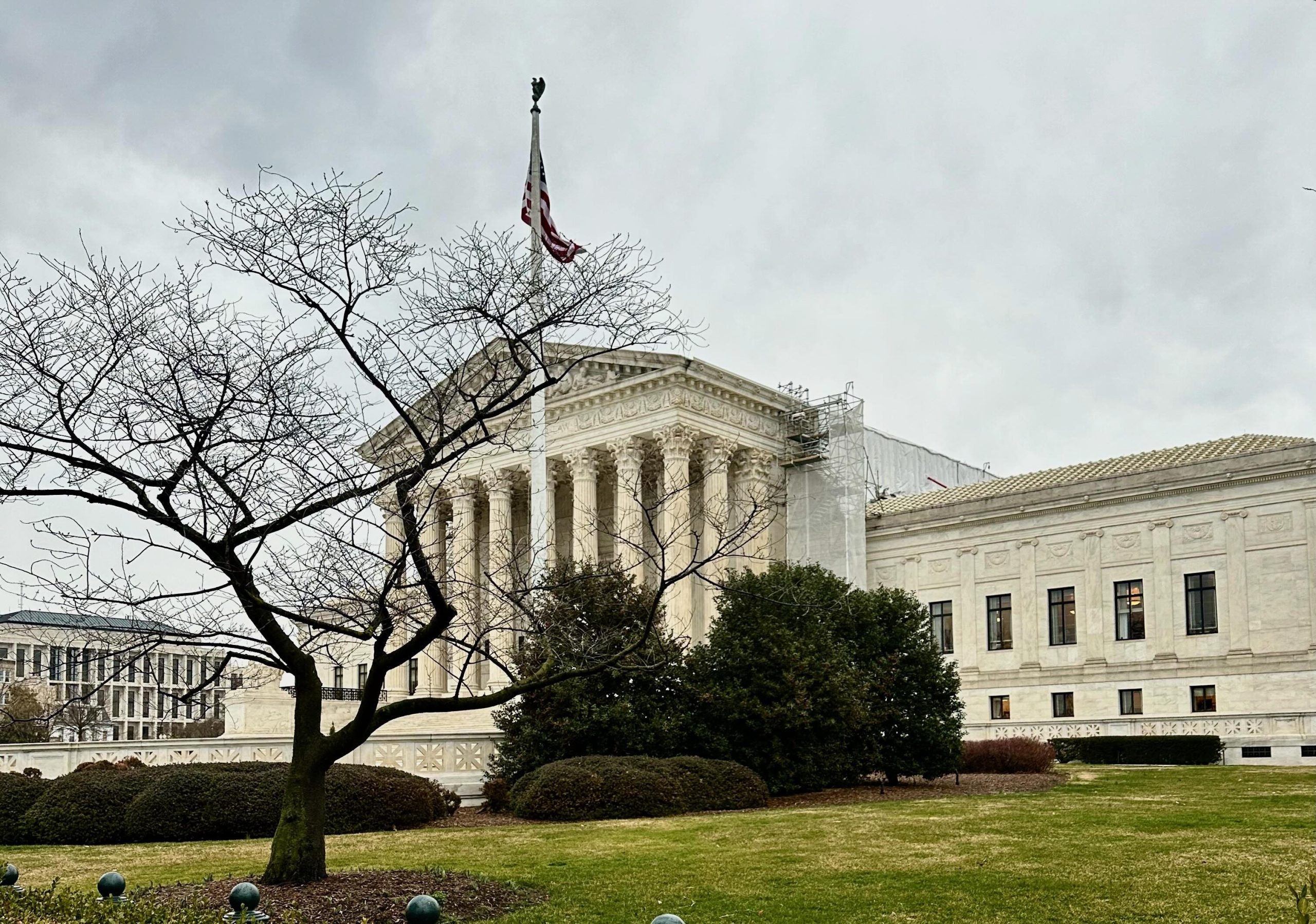The hidden prevalence of criminal law at the Supreme Court


SCOTUSCrim is a recurring series by Rory Little focusing on intersections between the Supreme Court and criminal law.
Please note that the views of outside contributors do not reflect the official opinions of SCOTUSblog or its staff.
Last month I wrote about what I called 14 “pure” criminal law cases from the Supreme Court’s 2024-25 term. But there are another 13 decisions that I consider “related to criminal law.” Together, these 27 decisions* comprise 40% of the term’s 67 “Opinions of the Court” merits docket. That’s a pretty normal percentage – every year I’ve been doing this (30 or more), the Supreme Court’s “criminal law and related” decisions comprise between 25 to 40% of its caseload. Perhaps even more remarkably, the justices themselves sometimes fail to recognize – or at least acknowledge – the criminal law implications of many of their cases.
So what constitutes “Criminal Law and Related”?
When I count, I survey only the decisions that the court lists on its own webpage as “Opinions of the Court.” (There is no part of the court’s website labeled “merits docket,” and – for that matter – no formal “emergency docket” either, despite what my friend Erwin Chemerinsky says. For this reason, SCOTUSblog has had to create its own tracking page for that category.)
“Pure” criminal law cases are relatively easy to identify, addressing subjects taught or addressed in law schools’ standard criminal law or procedure classes. During the 2024-25 term, for instance, these included “aiding and abetting,” theories of fraud, the Fourth Amendment, criminal sentencing (three cases), and firearms regulation. Last month’s column provided a list of the 2024-25 term’s 14 pure criminal law decisions.
Then it gets a bit less obvious. I characterize a Supreme Court case as “related to criminal law” when it has a criminal law foundation or clear implications for criminal law practitioners (and courts). So, for example, I count every decision addressing an aspect of immigration law as “criminal” – five decisions this term, including two that crept over from the “emergency docket,” Trump v. J.G.G. and A.A.R.P. v. Trump. As made clear by the ABA, criminal lawyers must be aware of their clients’ immigration status and understand that even “minor” criminal events (such as an arrest or a misdemeanor plea) can have hugely consequential immigration effects. Thus, for example, while decisions like J.G.G. and A.A.R.P. made headlines for their immigration and separation of powers implications, they must be considered for their potential criminal aspects, as well.
Another example of cases that are technically civil, but related to criminal law, are federal habeas corpus decisions – that is, rulings in cases by inmates seeking post-conviction relief in federal courts. While the procedural details and intricate reasoning of these cases can be numbingly technical, they always involve underlying criminal facts, accusations, procedures, and implications. In Rivers v. Guerrero, for example, the court issued a rather dry unanimous ruling about what constitutes a “successive” habeas petition. But this case also involved disturbing child sexual abuse allegations, as well as Rivers’ constitutional claims of an allegedly drunk and ineffective lawyer. Whether Rivers can make his exculpatory claims and how precisely the district court should evaluate them matter deeply, to Rivers (who is still in prison), to the state of Texas, and to the victims of the crimes.
Skrmetti and its criminal implications
United States v. Skrmetti, in which the Supreme Court upheld Tennessee’s 2023 law prohibiting certain medical treatments for transgender youths, attracted perhaps the most popular, as well as scholarly, attention of any decision during the 2024-25 term. The question formally presented in Skrmetti involved the 14th Amendment’s equal protection clause, and was thus based in constitutional law. Given this, it is likely on no one’s list of criminal law cases – except mine.
So far as the opinions read, the statute did not carry any criminal penalties, and the justices (including the vehement dissenters) naturally did not discuss criminal law. (Justices Amy Coney Barrett and Sonia Sotomayor did mention past “criminalization” of other groups in passing.) But readers should, and lawyers and legislators do, think ahead to the future, whether attractive or appalling. After the court’s decision in Dobbs v. Jackson Women’s Health Organization removed constitutional protections for abortion, criminal penalties have been available to use against abortion providers (that is, doctors, nurses, and others involved).
As for medical treatments for transgender youths, journalist Chris Geidner reported in 2023 that an almost identical Oklahoma statute actually contains a “felony criminal provision that can be enforced against a medical provider.” Various other reports and articles have suggested that criminal penalties are available, in at least five states, for physicians providing transgender care. To not consider Skrmetti as a decision “related to criminal law” merely because the justices failed to mention criminalization is to be blind to the somewhat chilling criminal consequences to which their decision might, by a vote of 6-3, lead.
Other civil decisions are criminal law related just by description
There were several other cases during the 2024-25 term for which the criminal foundation or implications might go unnoticed. For example, for jurisdictions in which the use of marijuana remains unlawful, the caption alone of Medical Marijuana, Inc. v. Horn, a civil case addressing the scope of federal racketeering laws, puts the case on my list. Similarly, you don’t have to read very far beyond the caption of Fuld v. Palestine Liberation Organization to realize that this technical “personal jurisdiction” case actually challenges the application of a federal statute providing a federal forum for victims of criminal terrorism.
Meanwhile, Free Speech Coalition v. Paxton sounds like a First Amendment case – and it was. Specifically, the court upheld a Texas law imposing age-verification requirements to access pornography, determining that such requirements did not excessively burden adults’ protected speech. But the criminal lawyer in me immediately wondered about potential future application of criminal penalties to the use of fake IDs.
By contrast, the ability to sue under the federal civil rights laws might sound like a snoozer to criminal lawyers. But when you learn that Gutierrez v. Saenz involves access to DNA testing in a capital case, and a 15-year confrontation with a Texas district attorney who refuses to permit DNA testing, the interest of criminal litigators on both sides surely perk up. Similarly, securities fraud prosecutors and defense lawyers – as well as anyone speaking for a publicly held company – will want to study the 81-page decision by the U.S. Court of Appeals for the 9th Circuit allowing a civil securities fraud case to move forward. This is true even though the only record left on the Supreme Court’s docket in NVIDIA Corp. v. E. Ohman J:or Fonder AB is an unexplained one-line dismissal of the case (a “DIG”) even though the justices originally found the case to be worthy of oral argument.
The court’s failure to address the criminal implications of these cases is neither uncommon nor wrong. Questions are usually presented to the justices in very narrow, legalistic, silos – as small (albeit important) points of law that have divided lower courts. National guidance on such questions is important, and the justices are usually careful to try to answer only the narrow questions presented. But it is important for practitioners, advocates, and the general public to avoid being so siloed. They need to know what is going on in, or underneath, or by implication of, such cases. My hope is to bring some awareness that these cases relate to criminal law, even if a reader (or a justice) might easily bypass a brief sound-bite description of the case and think there’s nothing else to see.
***
Below is a list of the additional 13 “related to criminal law” decisions issued on the court’s merits docket during the 2024-25 term. My brief accounts here are not to critique any particular result (although that may well be merited both here and in scholarly articles in coming weeks). Rather, my goal is simply to reveal that the Supreme Court’s writings can be mined to reveal criminal law and related issues in many more cases than brief media descriptions might suggest, and to assert that the Supreme Court’s criminal law work and implications, even if not flagged by the justices themselves, are worth everyone’s attention.
“Related to Criminal Law” decisions from the 2024-25 Term
1. Free Speech Coalition v. Paxton (June 27, First Amendment): age verification requirements for pornography upheld, applying intermediate, rather than strict, scrutiny.
2. Gutierrez v. Saenz (June 26, Fifth Amendment): Standing to challenge Texas law limiting access to DNA evidence (capital case).
3. Fuld v. Palestine Liberation Organization (June 20, Fifth Amendment): Upholding the statutory exercise of personal jurisdiction over Palestine Liberation Organization for alleged terrorism.
4. United States v. Skrmetti (June 18, 14th Amendment): Rejecting an equal protection challenge to statute prohibiting certain medical treatments for transgender youths.
5. Rivers v. Guerrero (June 12, habeas corpus): When a second-in-time application constitutes a “successive” petition.
6. Wisconsin Bell, Inc v. United States, ex rel. Heath (Feb. 21, False Claims Act): requests for reimbursement from a “private” fund can be a federal claim if the government provided “any portion” of the money sought.
7. NVIDIA Corp. v. E. Ohman J:OR Fonder AB (Dec. 11, securities fraud): dismissed as improvidently granted after argument, apparently because too fact-specific.
8-12: Five immigration cases:
– Riley v. Bondi (June 26): filing deadline is not jurisdictional.
– A.A.R.P. v. Trump (May 16, from the emergency docket): due process for removals under the Alien Enemies Act; the government is enjoined.
– Monsalvo Velazquez v. Bondi (April 22): voluntary departure deadline extends to next business day.
– Trump v. J.G.G. (April 7, from the emergency docket): due process for removals under the Alien Enemies Act, but habeas must be filed in the district where the detainee is confined.
– Bouarfa v. Mayorkas (Dec. 10): revocation based on sham marriage.
13: Medical Marijuana, Inc. v. Horn (April 2, Civil RICO): Plaintiff may sue for “business or property loss even if the loss was caused by a personal injury.” Tongue-in-cheek speculation: Could the four conservative dissenters be motivated in part by a generational distaste for marijuana? Barrett, the majority author, is the youngest justice on the court (age 53), joined by Justice Neil Gorsuch (age 57) and the three liberals.
*Four weeks ago I mistakenly said the 2024-25 term CLAR total was 29, not 27. Such are the vagaries of trying to compile and categorize all of the court’s decisions within days of the term ending.
Posted in Recurring Columns, ScotusCrim
Cases: Free Speech Coalition, Inc. v. Paxton, Wisconsin Bell, Inc. v. United States, ex rel. Todd Heath, Riley v. Bondi, Rivers v. Guerrero, Medical Marijuana, Inc. v. Horn, United States v. Skrmetti, Bouarfa v. Mayorkas, Gutierrez v. Saenz, Velazquez v. Bondi, NVIDIA Corp. v. E. Ohman J:or Fonder AB, Fuld v. Palestine Liberation Organization, A.A.R.P. v. Trump, Trump v. J.G.G.